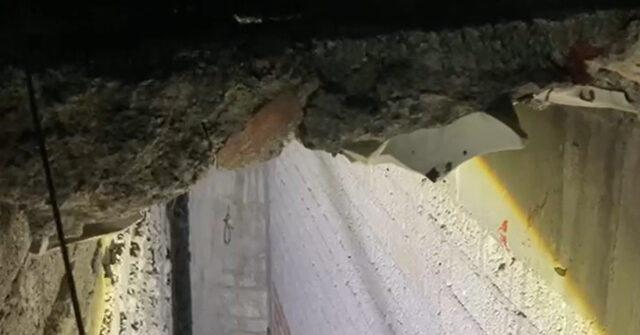Authorities in Mexico City are currently investigating a sophisticated drug trafficking operation that utilized a tunnel to transport drugs directly into a storefront. While tunnels are commonly associated with drug smuggling along the U.S.-Mexico border, their usage within other regions of Mexico is relatively uncommon. The investigation centers around a location in the Xochimilco borough, on the southern side of Mexico City, where officials uncovered this unique method of drug distribution.
In a focused ten-day operation aimed at dismantling street-level drug dealing activities, Mexico City authorities executed a series of raids that led to the apprehension of 27 individuals. Additional successes included the confiscation of over 1,300 cocaine baggies, 364 baggies of marijuana, numerous weapons, three vehicles, and tactical gear. This operation not only highlighted the sheer volume of drugs being distributed but also showcased the complexity of the criminal networks operating within the city.
During the investigation, authorities discovered a house functioning as a drug storefront in the Santa Crucita neighborhood. It was found that this house was interconnected to an adjacent property via a tunnel, which further extended to another nearby location. This revelation indicated a level of sophistication within the drug operation that is typically observed in larger cartels, rather than smaller street-level dealers. As law enforcement officials carried out further investigations, they turned their findings over to the Mexico City Attorney General’s Office, which is now questioning the detained suspects and pursuing inquiries related to the tunnel’s origins and usage.
Historically, criminal organizations, such as the Union de Tepito, have leveraged both bunkers and tunnels to navigate the complexities of drug trafficking in Mexico. An example from 2019 reveals the existence of a stash house linked to this group, where authorities discovered a series of bunkers stocked with militarized weapons, including grenade launchers and RPGs. Additionally, one bunker was transformed into an altar reportedly used for witchcraft rituals and sacrifices, which drew significant public and media attention. This previous case demonstrates the lengths to which these criminal organizations will go to maintain their operations and evade law enforcement.
The gruesome discoveries in these past operations included human remains and fetuses, believed to be used in rituals for protection against law enforcement. Authorities collected DNA evidence from these remains in an effort to identify victims and further unravel the illicit activities of the cartel. This pattern of using underground tunnels, alongside the barbaric practices connected to ritualistic elements, underscores the dangerous and often shocking reality of drug-related crime in Mexico.
As the investigation continues, the focus remains on uncovering the broader network at play, addressing the methods employed by these organizations, and apprehending those responsible for these heinous activities. The joint efforts of various law enforcement agencies illustrate their commitment to combating drug trafficking and the proliferation of organized crime within the capital city, while also shedding light on the troubling complexity of these operations and the desperate measures they undertake to support their drug trade.

